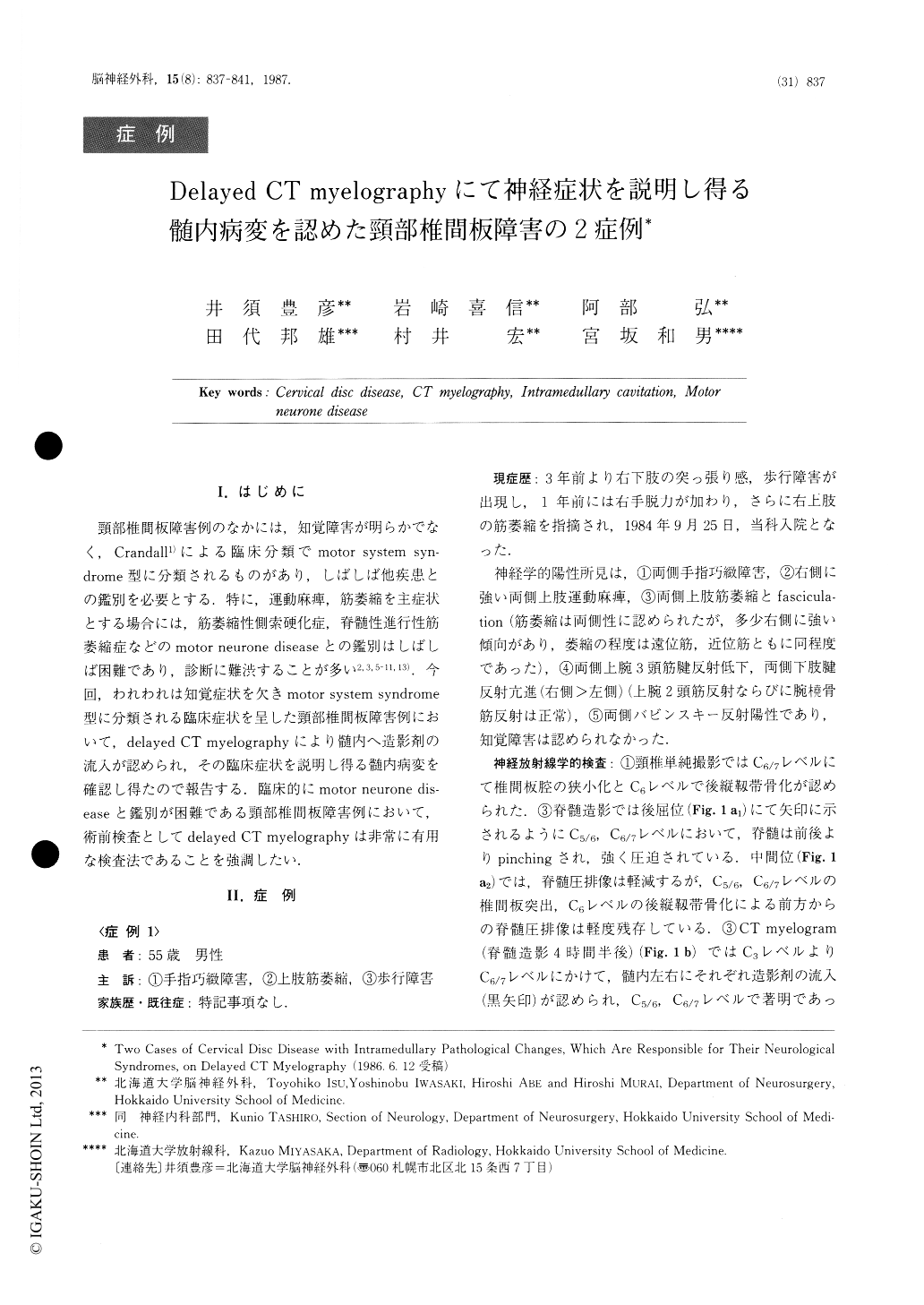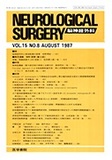Japanese
English
- 有料閲覧
- Abstract 文献概要
- 1ページ目 Look Inside
I.はじめに
頸部椎間板障害例のなかには,知覚障害が明らかでなく,Crandall1)による臨床分類でmotor system syn—drome型に分類されるものがあり,しばしば他疾患との鑑別を必要とする.特に,運動麻痺,筋萎縮を主症状とする場合には,筋萎縮性側索硬化症,脊髄性進行性筋萎縮症などのmotor neurone diseaseとの鑑別はしばしば困難であり,診断に難渋することが多い2,3,5-11,13).今回,われわれは知覚症状を欠きmotor system syndrome型に分類される臨床症状を呈した頸部椎間板障害例において,delayed CT myelographyにより髄内へ造影剤の流入が認められ,その臨床症状を説明し得る髄内病変を確認し得たので報告する.臨床的にmotor neurone dis—easeと鑑別が困難である頸部椎間板障害例において,術前検査としてdelayed CT myelographyは非常に有用な検査法であることを強調したい.
We report two cases of cervical disc disease with myelopathy classified as of motor system syndrome type showing small contrast accumulation within the spinal cord on delayed CT myelography. In our two cases, high density spots on delayed CT myelography were bilaterally localized within the spinal cord, and be-lieved represent pathological changes of the spinal cord, such as collection of microcavities or cystic necro-sis. In case 1, the high density areas seemed to be local-ized in the anterior horn and corticospinal tract, and incase 2, they seemed to be localized in the corticospinal tract.

Copyright © 1987, Igaku-Shoin Ltd. All rights reserved.


